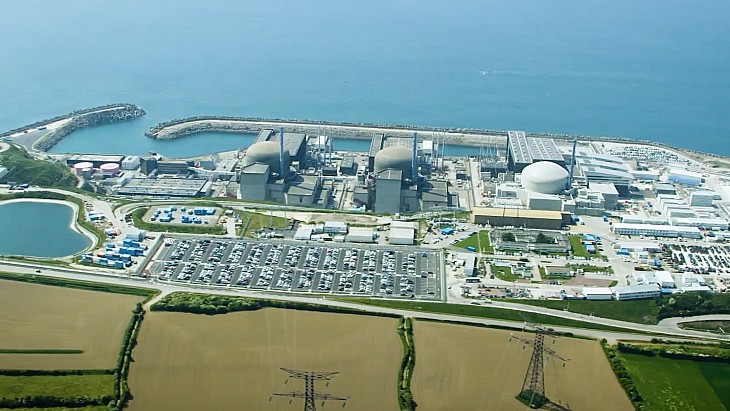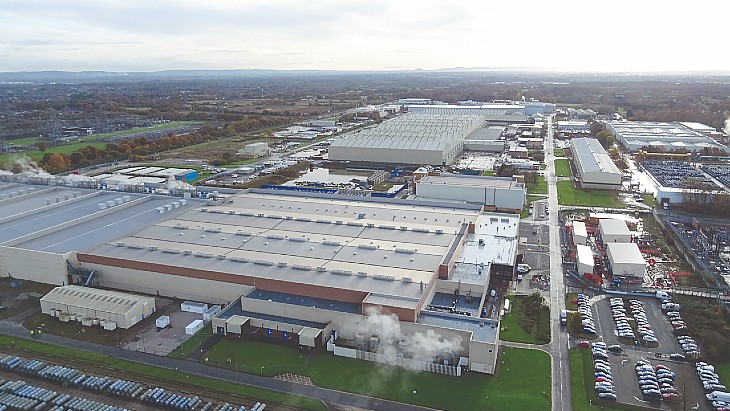GREENWASHING
EDF secures 'green' financing for extended operation of reactors
French utility EDF has signed green bank loans for a total amount of about EUR5.8 billion (USD6.3 billion), which will be used to finance the life extension of its existing nuclear power plant fleet in France.
.jpg?ext=.jpg) The Tricastin plant comprises four 900 MWe PWRs (Image: EDF/Toma/M Hake)
The Tricastin plant comprises four 900 MWe PWRs (Image: EDF/Toma/M Hake)The loans - which have maturities of between 3 and 5 years - have been arranged with major international banks, including BNP Paribas, Bank of America, Crédit Agricole CIB, ING, Natixis CIB, Société Générale and Wells Fargo.
EDF announced its Grand Carénage life extension programme for the existing fleet in France in 2011. Under this investment programme, the company planned to spend around EUR55 billion by 2025 on upgrading its plants to improve their performance and enable their continued operation beyond 40 years. The programme also includes safety upgrades in response to the Fukushima Daiichi accident in Japan.
The investment was optimised and revised to EUR45 billion in 2018, and in 2020 EDF adjusted the programme's cost to EUR49.4 billion.
A green bilateral loan worth EUR1 billion was announced by EDF and Credit Agricole CIB in November 2022.
EDF noted that the investments in the extension of the operation of its reactors "are aligned with the European taxonomy".
In July 2022, the European Parliament voted to include certain nuclear and gas activities within the European Union's list of officially approved "green" investments.
In February 2021, the country's nuclear safety regulator, the Autorité de Sûreté Nucléaire (ASN), set the conditions for the continued operation of EDF's 900 MWe reactors beyond 40 years. The regulator said it considered the measures planned by EDF combined with those prescribed by ASN will ensure the safety of the units for a further 10 years of operation.
In August 2023, unit 1 of the Tricastin nuclear power plant in southern France became the first French power reactor licensed to operate beyond 40 years.
EDF operates three pressurised water reactor designs, known as the 900 MWe, the 1300 MWe and the 1450 MWe N4. Its 32 operating 900 MWe reactors came into commercial operation between 1977 and 1988, and include the oldest of the country's current nuclear fleet. Such reactors are in operation at EDF's Blayais, Bugey, Chinon, Cruas-Meysse, Dampierre, Gravelines, Saint-Laurent and Tricastin nuclear power plants.
ASN said the improvements and measures will be applied to each reactor individually during their fourth periodic safety reviews, scheduled to run until 2031. These reviews will take the particularities of each facility into account, it said. The measures planned by EDF for each reactor will be subject to a public inquiry.
13 May 2024
Authorisation issued for Flamanville EPR commissioning
08 May 2024
France's nuclear regulator has authorised the commissioning of the Flamanville EPR reactor, which has a summer 2024 target for connection to the grid.
 Flamanville (Image: Screengrab from EDF/Youtube)
Flamanville (Image: Screengrab from EDF/Youtube)
The authorisation from the Autorité de Sûreté Nucléaire (ASN) means EDF can now load nuclear fuel into the reactor and carry out start-up tests and then operation of the reactor. Within hours of the authorisation being announced EDF said it had begun to load nuclear fuel assemblies into the reactor vessel - adding that it would take several days to load the 241 fuel assemblies.
The ASN decision follows a public consultation which ran from 27 March until 17 April.
ASN issued technical requirements alongside the authorisation saying it would supervise the performance and monitoring of installation start-up tests after fuel loading and also specify methods for acting on feedback from other EPR-type reactors around the world. The first EPR units came online at Taishan in China, where unit 1 became the first EPR to enter commercial operation in 2018 followed by Taishan 2 in September 2019. In Europe, Olkiluoto 3 in Finland entered commercial operation in 2023 and two units are under construction at Hinkley Point C in the UK.
Construction work began in December 2007 on the 1650 MWe unit at the Flamanville site in Normandy - where two reactors have been operating since 1986 and 1987. The dome of the reactor building was put in place in July 2013 and the reactor vessel was installed in January 2014. The reactor was originally expected to start commercial operation in 2013. In December 2022 the total cost at completion of the project was estimated by EDF to be EUR13.2 billion (USD14.2 billion).
China and France aim to strengthen nuclear energy cooperation
09 May 2024
China's CGN and France's EDF have signed a Letter of Intent on deepening and expanding cooperation on nuclear energy - it came as President Emmanuel Macron hosted a visit to France by Chinese President Xi Jinping.
 (Image: China Xinhua News/X)
(Image: China Xinhua News/X)
Acording to the Chinese Foreign Ministry report on the talks, President Xi said the two countries should step up cooperation in a number of areas, including "nuclear energy, innovation and finance", with President Macron responding that France was "ready to step up cooperation with China" in areas including "nuclear energy for civilian use".
During the visit there were a number of business cooperation agreements outlined, with the Letter of Intent on Deepening Related Cooperation in the Nuclear Energy Field signed by Yang Changli, Chairman of China General Nuclear (CGN), and EDF Chairman and CEO Luc Raymond.
According to CGN the letter of intent means "the two parties will further expand and strengthen cooperation in aspects such as nuclear power engineering construction, talent training, EPR operations and leadership training in the field of nuclear power operations to achieve common development".
CGN and EDF have worked together over many years, dating back to the Daya Bay nuclear power plant's construction, which began in the 1980s, and CGN said that deepening and expanding cooperation areas "is of great significance to the development of civil nuclear energy in both countries and the business development of the two groups".
China and France are two of the world's biggest generators of nuclear energy, with both having large-scale plans to expand capacity in the coming years. According to World Nuclear Association figures, both countries currently have 56 operable reactors. China's have a capacity of 54 GW and it has 27 more reactors under construction which would provide 28.9 GW more capacity. France currently has 61 GW nuclear energy capacity, with one more 1.6 GW reactor under construction.
Researched and written by World Nuclear News
.jpg?ext=.jpg) The steam generator making its final approach to Hinkley Point C (Image: EDF Energy)
The steam generator making its final approach to Hinkley Point C (Image: EDF Energy).jpg)
.jpg)

 The Capenhurst site (Image: Urenco)
The Capenhurst site (Image: Urenco).jpg?ext=.jpg) (Image: KHNP)
(Image: KHNP).jpg)
.jpg?ext=.jpg) The Bruce Heavy Water Plant prior to dismantling (Image: Bruce Power)
The Bruce Heavy Water Plant prior to dismantling (Image: Bruce Power)